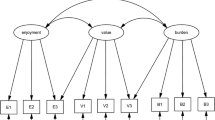Abstract
As the percentage of the population with previous survey experience is high, it is important to study the relation between nonresponse and quality of survey experience. It was hypothesized that the pleasantness of the most recent participation in survey research would influence the willingness of persons to participate again as a respondent in surveys. Results of a survey among 981 respondents in the Netherlands indicate that significantly more respondents with a pleasant most recent survey experience had participated in the past year than respondents with an unpleasant, or indifferent most recent experience. An unpleasant or indifferent most recent participation increased the delay between participations by 50%.
Similar content being viewed by others
References
Baxter, R. (1960). An inquiry into the misuse of the survey technique by sales solicitors. Public Opinion Quarterly, 44; 223–233.
Day, G.S. (1975). The threats to marketing research. Journal of Marketing Research, 12; 462–467.
DeMaio, T.J. (1980). Refusals: who, where, and why? Public Opinion Quarterly, 44; 223–233.
Goyder, J. (1986). Surveys on surveys: limitations and potentialities. Public Opinion Quarterly, 50; 27–41.
Goyder, J.R. & J.M. Leiper (1985). The decline in survey response: a social values interpretation. Sociology, 19; 55–71.
Groves, R.M. & R.L. Kahn (1979). Surveys by telephone. New York: Academic Press.
Market Research Society (1976). Response rates in sample surveys. Journal of the Market Research Society, 18, 113–141.
McDaniel, S.W., P. Verille & C.S. Madden (1985). The threats to marketing research. Journal of Marketing Research, 22; 74–80.
National Research Council (1979). Privacy and confidentiality as factors in survey response. Washington, D.C., Nationa Academy of Science.
National Research Council (1984). Survey Measurement of Subjective Prenoms. Washington, D.C.: National Academy Press.
Nederhof, A.J. (in press). Artifact in Social Science Research. New York: Irvington.
Nederhof, A.J. (1986). Effects of research experience of respondents. Quality and Quantity, 20, 175–182.
Roper, W. (1986). Evaluating polls with poll data. Public Opinion Quarterly, 50; 10–16.
Schleifer, S. (1986). Trends in attituds toward and participation in survey research. Public Opinion Quarterly 50; 17–26.
Sharp, L.M. & J. Frankel (1983). Respondent burden: a test of some common assumptions. Public opinion Quarterly, 47; 36–53.
Sheatsley, P.B. (1969). The harassed respondent: II. Interviewing practices. In: L. Bogart (ed.) Current controlversies in marketing research. Chicago: Markham.
Sheets, Th., A. Radlinski, J. Kohne & A. Brunner (1974). Deceived respondents: once bitten, twice shy. Public Opinion Quarterly, 38; 261–263.
Steeh, C.G. (1981). Trends in nonresponse rates, 1952–1979. Public Opinion Quarterly, 45; 40–57.
Author information
Authors and Affiliations
Rights and permissions
About this article
Cite this article
Nederhof, A.J. When neutrality is negative. Qual Quant 21, 425–432 (1987). https://doi.org/10.1007/BF00172567
Issue Date:
DOI: https://doi.org/10.1007/BF00172567




